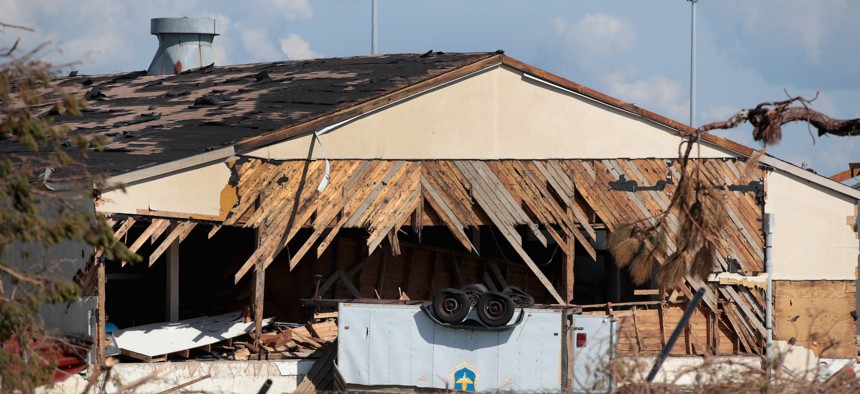BY JOHN CONGER

President Biden tells a story from early in his tenure as vice president when he and then-President Obama visited the Pentagon and met with the Joint Chiefs of Staff. During the meeting, Biden says, the Joint Chiefs told him that climate change was the greatest threat to American security. He invoked this story again during his recent European visit.
Soon afterward, Gen. Mark Milley, testifying to the Senate as Joint Chiefs chairman, was asked about the president’s anecdote. Milley concurred that climate change is a threat, but he hedged. He noted the impact on natural resources and said climate change will drive instability in certain parts of the world. He highlighted extreme weather and how it can damage military installations, citing the devastation of Tyndall Air Force Base in Florida in 2018. Milley concluded that from a strictly military standpoint, his focus was on China and Russia.
It’s true that Mother Nature has no military per se, but the damage she did to Tyndall AFB was nonetheless very real. It was, in fact, more damage than any enemy has done to an American base in many decades.
Milley’s quandary highlights the challenge of comparing threats from military competitors with transboundary threats to national security such as climate change, pandemics, cyber threats or even terrorist organizations.
Ultimately, it’s a false comparison. The real question isn’t whether climate change is a bigger or smaller national security threat than Russia or China; it’s how climate change amplifies the threats that the United States faces.
For example, how has climate change, through the melting and more accessible Arctic Ocean it has created, affected Russia’s military posture? Russia has moved military forces to the North, invested in military infrastructure along its northern coast, and begun requiring military escorts (for a charge) of shipping along the northern sea route. It has been increasingly aggressive in projecting its influence into the Arctic, both because it promises economic opportunities, but also because its accessibility creates a vulnerable northern flank. A recent study pointed to the significant vulnerability that Russia faces from thawing permafrost, and we have seen the catastrophic results of their failure to prepare for changes in environmental conditions. In 2019, then-Supreme Allied Commander of NATO, Gen. Curtis Scaparotti, testified that he had changed operational plans in response to the Russian moves.
Another recent study from the Council on Strategic Risks highlights the ways climate change is amplifying tension along the border between China and India. The mountainous border is warming, allowing more troop mobility and making clashes more likely. Both countries are struggling with increasingly erratic water supplies; China is building dams to control rivers that India depends on. On the other side of the Himalayas, India has the upper hand, controlling the flow of all of Pakistan’s fresh water. Either way, water is a source of increasing tension between nuclear powers.
A look further into the future reveals more ways climate change may drive security problems for the United States and undermine global stability. In the Security Threat Assessment of Global Climate Change, security experts examined scenarios where global temperatures reach 2 and 4 degrees Celsius above pre-industrial levels. Without trying to predict the geopolitics of the late 21st century, the trends pointed to increased instability and ungoverned spaces; some nations will lack the capacity to manage climate stress. We will see the growth of uninhabitable spaces, through desertification, extreme heat, and rising seas. People will migrate – generally to places where other people already live, increasing friction and societal strains. International tensions will rise as nations position themselves to protect their own populations and provide them with sufficient food, water and energy. Then, of course, there are the wildcards – the emerging pandemics or sudden sea-level rise increases that are difficult to predict, but which have catastrophic implications.
If Russia and China are the opponents, then global warming is reshaping the gameboard in ways that fundamentally change the contest. No assessment of threats posed by our adversaries is complete without understanding the environment that influences them and in which they operate – and requires an understanding of the transformation driven by climate change. In fact, those that understand and prepare for these changes have an advantage.
The critical epiphany on the climate threat is realizing it isn’t a comparison or a choice. Climate change should be an ingredient in any threat assessment, and as it becomes increasingly disruptive, its effects will become larger and larger influences on each threat we face. Addressing climate change, both in the short term through adaptation and resilience and in the long term through emissions reductions, is an essential part of ensuring we have the capacity and capability to deal with the traditional military threats we face.
No comments:
Post a Comment